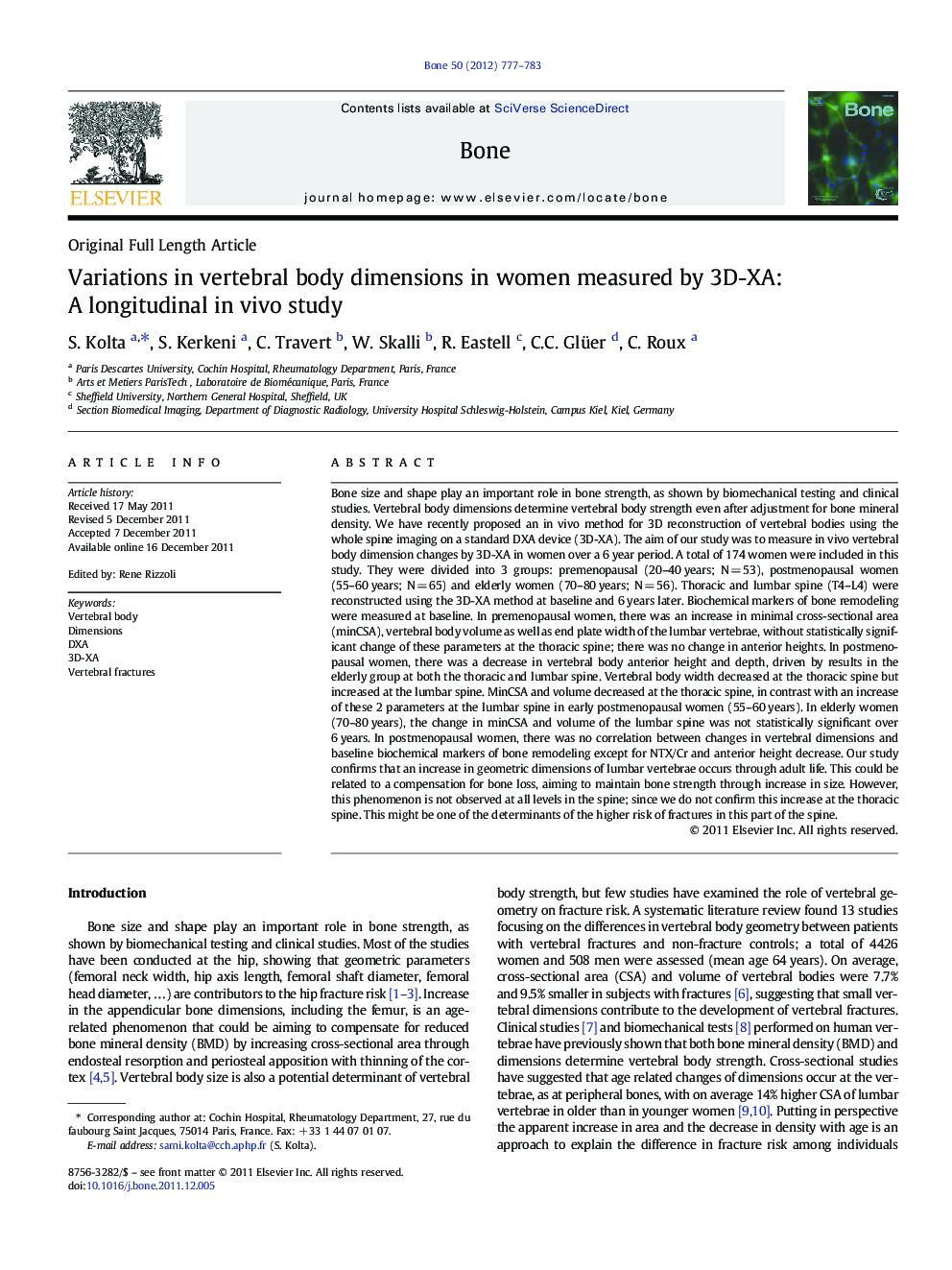| Article ID | Journal | Published Year | Pages | File Type |
|---|---|---|---|---|
| 2779670 | Bone | 2012 | 7 Pages |
Bone size and shape play an important role in bone strength, as shown by biomechanical testing and clinical studies. Vertebral body dimensions determine vertebral body strength even after adjustment for bone mineral density. We have recently proposed an in vivo method for 3D reconstruction of vertebral bodies using the whole spine imaging on a standard DXA device (3D-XA). The aim of our study was to measure in vivo vertebral body dimension changes by 3D-XA in women over a 6 year period. A total of 174 women were included in this study. They were divided into 3 groups: premenopausal (20–40 years; N = 53), postmenopausal women (55–60 years; N = 65) and elderly women (70–80 years; N = 56). Thoracic and lumbar spine (T4–L4) were reconstructed using the 3D-XA method at baseline and 6 years later. Biochemical markers of bone remodeling were measured at baseline. In premenopausal women, there was an increase in minimal cross-sectional area (minCSA), vertebral body volume as well as end plate width of the lumbar vertebrae, without statistically significant change of these parameters at the thoracic spine; there was no change in anterior heights. In postmenopausal women, there was a decrease in vertebral body anterior height and depth, driven by results in the elderly group at both the thoracic and lumbar spine. Vertebral body width decreased at the thoracic spine but increased at the lumbar spine. MinCSA and volume decreased at the thoracic spine, in contrast with an increase of these 2 parameters at the lumbar spine in early postmenopausal women (55–60 years). In elderly women (70–80 years), the change in minCSA and volume of the lumbar spine was not statistically significant over 6 years. In postmenopausal women, there was no correlation between changes in vertebral dimensions and baseline biochemical markers of bone remodeling except for NTX/Cr and anterior height decrease. Our study confirms that an increase in geometric dimensions of lumbar vertebrae occurs through adult life. This could be related to a compensation for bone loss, aiming to maintain bone strength through increase in size. However, this phenomenon is not observed at all levels in the spine; since we do not confirm this increase at the thoracic spine. This might be one of the determinants of the higher risk of fractures in this part of the spine.
► We measured in vivo vertebral dimension changes by 3D-XA in 174 women over 6 years. ► In pre and postmenopausal women, minCSA and volume increased at the lumbar spine. ► In post menopausal women, these parameters decreased at the thoracic spine. ► Vertebral body dimension changes are different at the thoracic and lumbar levels. ► This might explain part of the higher risk of fractures at the thoracic spine.
